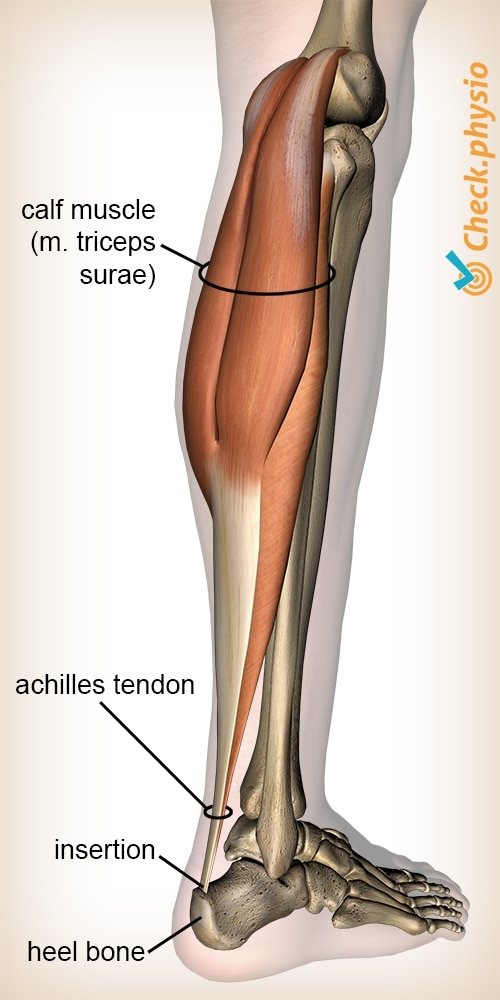Achilles tendinopathy
Achilles tendinosis / Achilles tendinitis
The Achilles tendon is located at the back of the calf and attaches to the heel. In the case of Achilles tendinopathy, the problem is located in the tendon itself or in the attachment to the heel bone.

The Achilles tendon connects the calf muscle (the triceps surae) to the heel bone. It is the strongest tendon in the body. This is a good thing, because the tendon experiences significant forces during walking, running, walking up and down the stairs and jumping.
Description of the condition
In the case of Achilles tendinopathy, the quality and structure of the tendon are reduced (tendinosis) or the tendon is inflamed (tendinitis). A distinction is made between a tendinopathy of the mid-section of the tendon and a tendinopathy affected the attachment of the tendon to the heel bone. If the mid-section of the tendon is affected, the symptoms dissipate more quickly than when the problem is located at the attachment site.
If the symptoms are located higher up the back of the lower leg, this may indicate a torn calf muscle.
Cause and origin
The symptoms generally occur gradually once the tendon has been strained for an extended period. This does not have to involve a heavy burden. Runners in particular have an increased risk of developing this Achilles tendon injury.
Other factors that may contribute to the symptoms developing include: Increasing the training intensity, change of footwear, the foot turning inwards (overpronation), weakness of the calf muscle or a shortened calf muscle.
In severe cases the tendon can even tear. This is referred to as an Achilles tendon rupture. A rupture will only occur in a healthy tendon if it endures extreme (tractive) forces. If tendinosis is present, the tendon can also rupture with more gentle activities.
Signs & symptoms
- Painful Achilles tendon or tendon attachment to the heel bone.
- The symptoms occur primarily after exercise in the early stages. Later on the symptoms can also occur during exercise or even be present continuously at rest.
- Pain when standing on the toes, jumping or hopping.
- The tendon can be slightly swollen.
- Direct pressure on the tendon or attachment site is painful.
Diagnosis
Treatment
The causative factors will be determined and treated. The physiotherapeutic treatment consists of eccentric exercises for the Achilles tendon and stretching exercises. Approximately 60 - 90 % of patients with tendinopathy of the mid-section of the Achilles tendon benefit from this treatment and are free of symptoms within 12 weeks, if the correct exercise programme is followed. If the attachment site of the tendon is affected, the patient must realise that the symptoms will likely persist for a longer period.
Exercises
Follow the exercise programme with specific exercises for Achilles tendinopathy.
You can check your symptoms using the online physiotherapy check or make an appointment with a physiotherapy practice in your area.
References
Alfredson, H. & Cook, J. (2006). Pain in the achilles region. In: Brukner, P., Kahn, K., eds. Clinical Sports Medicine. Sydney, Australia: McGraw-Hill; 2006:590-611.
Nugteren, K. van & Winkel, D. (2008). Onderzoek en behandeling van spieraandoeningen en kuitpijn. Houten: Bohn Stafleu van Loghum.


